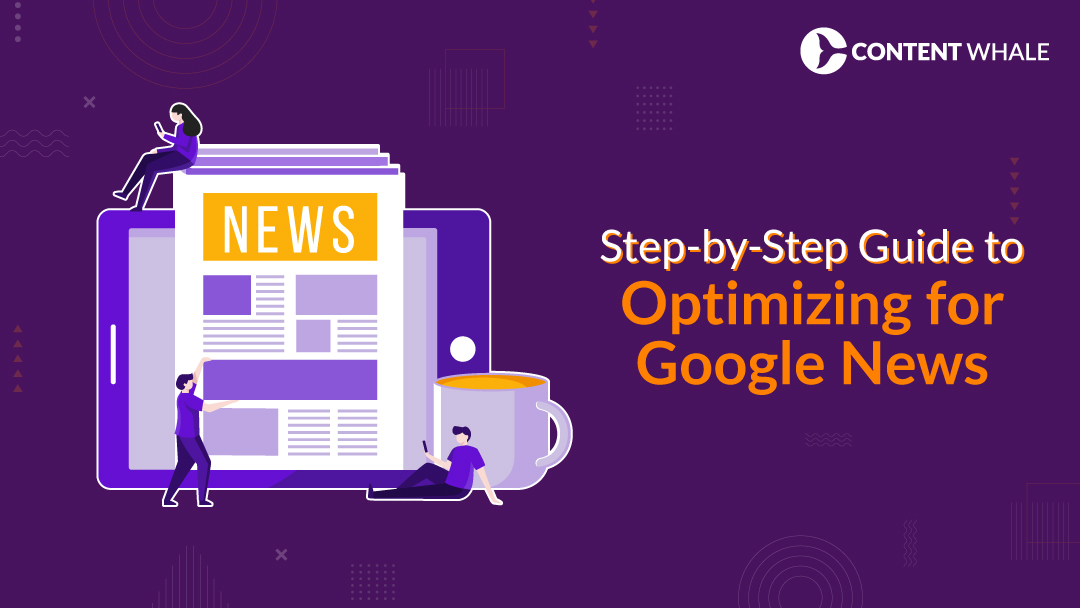Introduction
- Definition of content in the digital era
- Importance of content in marketing and communication
Evolution of Content
- A brief history of traditional to digital content
- The transition from print to digital platforms
Types of Content
- Written content: blogs, articles, whitepapers, eBooks
- Visual content: infographics, videos, photos
- Audio content: podcasts, audiobooks
- Interactive content: quizzes, polls, interactive infographics
Content and Marketing
- Role of content in digital marketing
- SEO and content: how content impacts search engine rankings
- Content strategy: planning, creation, distribution, and measurement
Content Creation
- Steps in creating compelling content
- Tools and technologies used in content creation
- Challenges in content creation and how to overcome them|
Content for Engagement
- How content drives engagement and interaction
- Examples of successful content campaigns
- Measuring engagement through analytics
The Future of Content
- Emerging trends in content creation and distribution
- The impact of AI and machine learning on content
- Predictions for the next decade in content strategy
Conclusion
- Summary of key points
- Call to action for businesses to leverage content effectively
Content, in the context of digital media, refers to any creative output designed to engage, inform, educate, or entertain an audience through various mediums. It encompasses text, images, video, audio, and interactive elements that are consumed through digital platforms. The core of content is communication—it serves as the vehicle through which ideas, messages, and information are conveyed.

- Communication Tool: Content is a fundamental tool for communication in digital marketing. It bridges the gap between a brand and its audience. It’s crafted to convey specific messages that resonate with its intended audience, whether to prompt action, inform decision-making, or increase brand awareness.
- Engagement Mechanism: Effective content captures attention and engages the viewer, reader, or listener, prompting them to interact with the content, whether through comments, shares, likes, or other forms of participation. Engagement is a critical measure of content’s success, reflecting its ability to connect on a personal level and stimulate interaction.
- Value Exchange: Content provides value, whether educational, emotional, or entertainment. This value is what attracts and retains the audience’s attention. For businesses, this value translates into increased trust and authority in their domain, leading to a loyal customer base.
- Strategic Asset: In a strategic context, content is used to achieve business goals such as lead generation, SEO ranking, and sales conversion. Content tailored for SEO, for example, uses specific keywords to boost a website’s visibility on search engines, thus drawing more traffic.

Content is more than just information; it’s a pivotal aspect of communication and marketing that captivates, educates, and influences audiences globally. Understanding content in its myriad forms—from text and images to videos and interactive elements—is essential for leveraging its power in the digital landscape.
The Evolution of Content
Content has undergone a dramatic transformation over the last few decades. From the traditional print media of newspapers and magazines, there has been a shift towards digital platforms such as blogs, social media, and websites. This shift has been driven by technological advancements and changing consumer behavior, with people increasingly seeking information online.
What are the Different Types of Content?
1. Written Content: Expanding the Impact
Written content like blogs, articles, and whitepapers is crucial for establishing thought leadership and providing in-depth knowledge. They serve not only to inform but also to solve problems, which enhances SEO by matching the content with users’ search queries. This alignment with user intent is why websites with regular blogs can see significant increases in traffic. For example, companies with an active blog strategy report substantial boosts in lead generation and customer engagement because they provide continuous value to their readers.
2. Visual Content: Enhancing Understanding and Shareability
Visual content such as videos, images, and infographics plays a vital role in simplifying complex information, making it quickly understandable at a glance. This type of content is not only engaging but also highly shareable, making it ideal for social media platforms where visuals are more likely to be shared, thus increasing reach and visibility. Enhanced by SEO practices, these visuals can dramatically improve a site’s visibility in image searches and contribute to overall SEO performance.
3. Audio Content: Meeting the Needs of the Modern Consumer
Podcasts and audiobooks meet the modern consumer’s demand for flexible, on-the-go content consumption. They are perfect for multitasking audiences who listen while commuting, working out, or during leisure activities. The increasing popularity of audio content is also beneficial for SEO, as Google has started to index this type of content, making it searchable and helping creators reach a broader audience.
4. Interactive Content: Engaging Users on a Deeper Level
Interactive content such as quizzes, interactive videos, and infographics are designed to engage users more interactively and personally. These formats are excellent for retention and lead conversion as they encourage users to spend more time on the page and interact with the content. For SEO, the longer engagement times and lower bounce rates signal to search engines that users find the content valuable, which can boost rankings.
5. Content and Marketing
Content is at the heart of digital marketing, influencing how brands connect with their target audiences. It boosts search engine visibility and enhances user engagement. For example, Google’s algorithms increasingly prioritize high-quality content that answers user queries effectively, as evidenced by their recent BERT update, which aims to understand natural language in search queries better.
Steps to Follow During Content Creation
Creating outstanding content is a multifaceted process that involves a series of deliberate and strategic steps to ensure the content not only reaches but also resonates with the intended audience. Here’s an expanded view of each step:
1. Research
Research is foundational in content creation. It involves identifying the needs and interests of your target audience and pinpointing gaps in the existing content. Effective research uses tools like Google Trends or audience analytics to understand what topics are currently relevant and what information the audience seeks. This step ensures that the content you plan to create has a ready and interested audience.
2. Planning
Once the research is complete, planning involves outlining the key messages and structure of the content. This step includes deciding on the format of the content, whether it be a blog, video, infographic, etc., and outlining the main points to cover. Tools like Trello or Asana can help organize and schedule content production, ensuring that all aspects of content creation are systematically addressed.
3. Execution
Execution is where the actual creation of the content takes place. Depending on the type of content, different tools are used:
- For written content, tools like Grammarly or Hemingway Editor ensure grammatical accuracy and readability.
- For visual content, platforms like Canva or Adobe Spark help create eye-catching graphics.
- For videos, you can make video content with Adobe Express or Final Cut Pro for a polished final product.
4. Distribution
Distribution involves choosing the right platforms to publish and promote the content. This could include social media channels, email newsletters, or other digital marketing platforms. The key is to understand where your target audience spends most of their time and to optimize the content format for each platform, ensuring maximum reach and engagement.
5. Measurement
Finally, measurement involves analyzing the performance of the content through analytics tools like Google Analytics. This step is crucial for understanding the impact of your content and measuring metrics like page views, time on site, and conversion rates. Insights gained from these metrics guide future content strategies, allowing for adjustments in approach to meet the needs of the audience better.
Content for Engagement
Content’s ultimate goal is to engage users and encourage interaction. For instance, interactive posts on social media can increase engagement rates by up to 50% compared to static posts. Real-life success stories, like Dove’s Real Beauty campaign, exemplify how powerful content can drive profound engagement and brand loyalty.

Conclusion: The Future of Content
As we look ahead, the content landscape is set to evolve with advances in AI and machine learning, making content creation more personalized and automated. For instance, Gartner predicts that by 2025, AI-driven content will produce more than 30% of digital content.
Content remains a powerful tool in the digital domain, essential for engaging and influencing public perception and behavior. As technology continues to evolve, so too will the strategies around content creation and distribution. Businesses that stay ahead of these trends will be best positioned to leverage content for maximum impact.
Bonus Content

Understanding “What is Content” in the Realm of SEO and Digital Marketing
Content forms the backbone of digital marketing, serving as the critical link between companies and their audiences. In the SEO and digital marketing world, content is more than mere information; it’s a strategic tool crafted to improve visibility, engagement, and conversion rates.
SEO and Content Integration
In SEO, content is tailored to meet the needs of search engines and users alike. By integrating keywords strategically and addressing user queries effectively, content enhances a website’s relevance and authority, thereby improving its rank in search engine results. Google’s ever-evolving algorithms, such as BERT and others, emphasize the importance of content quality, its context, and its ability to offer genuine value to readers.
Content in Digital Marketing
Digital marketing leverages content to achieve a wide range of marketing goals, including building brand awareness, generating leads, and nurturing customer loyalty. Effective content marketing isn’t just about selling products or services; it’s about creating narratives that resonate with audiences. Stories, testimonials, and case studies are all content types that connect on an emotional level, making digital marketing efforts more effective.
Advanced Content Strategies
Leading-edge strategies in content marketing involve the use of data analytics and behavioral insights to tailor content to user preferences and habits. Personalized content, which can range from customized email messaging to targeted blog posts, increases engagement rates and drives conversions. Furthermore, interactive content like polls, quizzes, and interactive infographics keeps users engaged longer, providing them with a dynamic experience that encourages active participation rather than passive consumption.
The Role of Content in User Engagement
Content’s effectiveness is measured through its ability to engage users and compel them to act. High-quality content produces higher engagement rates, demonstrated by time spent on a page, social shares, and, ultimately, the effectiveness of the call-to-action (CTA) used. Tools like A/B testing are often used to refine content approaches, ensuring that every piece of content not only attracts attention but also promotes user interaction.
We embark on an in-depth exploration of digital content, emphasizing its pivotal role in modern communication and marketing strategies. This discussion traces the evolution from traditional print media to today’s dynamic digital formats, exploring the spectrum of content types from written articles to engaging interactive media. Our comprehensive analysis covers the strategic process of content creation, from initial research and planning to effective distribution and rigorous performance analysis. Highlighting the importance of audience engagement and the transformative potential of AI and personalized content, this blog underscores content’s critical impact on shaping business strategies and enhancing user interactions in today’s digital landscape.





